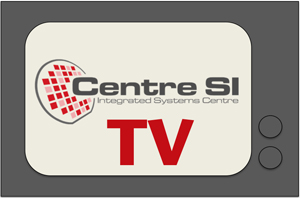Go to
October 24, 2012
Bionics: Nanoelectronics for biomedical systems
Wednesday, 24 October 2012 at 11:00 in INF 328
Tor Sverre Lande, Department of Informatics, University of Oslo, Norway
Abstract:
Microelectronics systems are spreading out and adapted for a number of specialized application. Unlike computer systems striving for more computational power (Moore-driven), these systems tend to have quite different requirements. Especially for biomedical applications, we need to rethink the way we design micro-/nanoelectronics. Some important characteristics of biomedical devices may be:
- Portable and battery operated with restricted power consumption and limiting complexity from the very basic hardware, through simplified communication strategies all the way to signal processing and conditioning algorithms embedded in the device.
- Small and compact devices suitable to wear on body or even implant inside our body. Modern nanoelectronics facilitate very compact miniaturization.
- Wireless for exchange of information, localization and even for power harvesting of ambient electromagnetic energy.
- Autonomous system design is vital for robust and fault-tolerant operation. Trading-off complexity towards decision speed and power consumption is challenging.
- Dynamic system behavior is an integral part of biomedical systems enabling devices to move around and join any authenticated network neighborhood, adapt to different operating conditions and so on.
- Robust overall system behavior is vital in biomedical electronics especially in health monitoring systems.
With these properties in mind, how do we design micro-/nanoelectronics systems for optimal performance? Going from the real world of analog to “digital” as soon as possible adapting a standard design procedure for digital systems seem to be the major trend. Are there alternatives?
During the last decade I have worked with alternative solutions for microelectronics system design paradigm named CTBV (Continuous-Time Binary-Value) inspired by the spiking behavior found in the marvelous computer of our bodies. More practically we have removed the clock of digital systems. By doing so we may reduce power consumption and even increase computational speed! After all the clock does not really compute anything, but does consume significant amount of power. As examples of CTBV systems I will present a communication solution for endoscope tracking as well as a single-chip radar suitable as a biomedical sensors. The radar-chip is commercialized through our spin-off company, Novelda AS. The CTBV coding paradigm may well be one way to make suitable “bionics” for demanding biomedical applications.
 About the speaker:
About the speaker:
Tor Sverre Lande, IEEE Fellow, member NTVA, is a professor in nanoelectronics at Dept. of Informatics, Univ. of Oslo as well as visiting professor at Institute of Biomedical Engineering, Imperial College, London, UK. He holds a cand real degree in computer science from Univ. of Oslo (1977). In 1980s he was in charge of the departmental computer support group getting internet in Norway rolling (1983), then moving into research and low-power analog microelectronics in the 1990s, picking up ultra-wideband and impulse radio technology after 2000 now explored in the spin-off company Novelda. He is active in the IEEE Circuits and Systems Society, currently as Vice-president of Conference, acting as Technical Program Chair for a number of conferences as well as the founding editor-in-chief of IEEE Transactions of Biomedical Circuits and Systems. He is the author or co-author of more than 120 scientific publications and book chapters.
Secondary navigation
- January 29, 2018
- August 30, 2017
- Past seminars
- 2016 - 2017 Seminars
- 2015 - 2016 Seminars
- 2014 - 2015 Seminars
- 2013 - 2014 Seminars
- 2012 - 2013 Seminars
- 2011 - 2012 Seminars
- 2010 - 2011 Seminars
- 2009 - 2010 Seminars
- 2008 - 2009 Seminars
- 2007 - 2008 Seminars
- 2006 - 2007 Seminars
- August 31, 2007
- June 29, 2007
- June 20, 2007
- June 5, 2007
- May 30, 2007
- May 16, 2007
- May 15, 2007
- April 24, 2007
- March 27, 2007
- March 14, 2007
- February 9, 2007
- February 8, 2007
- January 12, 2007
- December 5, 2006
- November 14, 2006
- October 31, 2006
- October 27, 2006
- October 26, 2006
- October 20, 2006
- September 20, 2006
- September 20, 2006
- September 20, 2006
- September 19, 2006
- 2005 - 2006 Seminars
- August 23, 2006
- August 22, 2006
- June 26, 2006
- June 20, 2006
- June 16, 2006
- June 7, 2006
- June 6, 2006
- May 30, 2006
- May 17, 2006
- May 10, 2006
- April 27, 2006
- April 12, 2006
- March 31, 2006
- March 29, 2006
- March 22, 2006
- March 15, 2006
- February 27, 2006
- February 8, 2006
- January 25, 2006
- January 19, 2006
- January 18, 2006
- January 17, 2006
- January 11, 2006
- November 30, 2005
- November 23, 2005
- November 2, 2005
- October 26, 2005
- October 25, 2005
- October 5, 2005
- September 28, 2005
- 2005 Seminars

